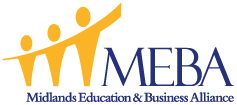Resumes
A resume is a summary of your education, skills and experience and the first link between you and a potential employer. A custom-designed marketing tool, tailored to your career objectives, the primary purpose of your resume is to secure an interview, not necessarily the job.
An effective resume is:
- Concise.
Limit your resume to one page. A rare exception is if you have years of experience or if the job for which you are applying calls for a curriculum vitae (CV). - Persuasive.
Your resume should work to convince a potential employer to hire you. It should be results-oriented and use action words to describe your experiences and achievements. - Accurate.
Your resume should be free of misspelled words and grammatical mistakes. Take care to make sure the format and font are consistent throughout. Most importantly, make sure the information you present is complete and correct, anything less can make you appear dishonest. - Relevant. Target your resume for the specific job for which you are applying, highlighting your relevant skills and experiences. Use specific examples of how you are qualified for the job and what you will bring to the company or organization.
Resume Prep
A little prep goes a long way. Resumes are all about the image you want to project to your future employer. The stronger the skill and experience descriptions in your resume, the higher the number of interviews and offers you’ll likely receive.
Before you begin writing your resume, it may help to complete a Personal Inventory Exercise to help focus your thoughts and determine the image you want to convey.
Resume Format
There are several resume formats, and you should select the one that best highlights your strengths and experience. Two of the most preferred formats are chronological and functional.
Chronological Resume
A Chronological Resume lists information – education history and work experience – in order of most recent to least recent, focusing on where and how skills were obtained. It focuses on continuity of employment and is especially effective if your work history is related to your career goals and you can show increasing responsibility. When listing your experience chronologically, make sure to include dates of employment, names and addresses of employers, job titles and brief descriptions of your responsibilities and accomplishments in each instance.
Functional Resume
A Functional Resume is organized according to skills and job function experience, grouping together experiences that show proficiency in a specific skill. This format minimizes or does not include names of past employers and dates and can be useful for persons with considerable volunteer (rather than paid) experience and career changes as well as recent high school and college graduates with limited employment who wish to emphasize the skills they have acquired through school.
Resume Content
Several components make up a resume, although the format you choose will determine which components you should include as well as in what order. Standard resume components include:
- Heading / Identifying Information
Place your contact information at the top of your resume, aligned to the left or centered on the page. Start with your name at the very top of your resume, followed by your mailing address, phone number and finally, your email or website address. - Employment Objective
Describe the job you want and/or your career goal in one clear, concise sentence directly under your resume heading /identifying information. - Special Certifications and Qualifications
List specific skills, certifications or training you have which relate to the job for which you are interested - Work Experience
Highlight previous jobs including your job title, place of employment, city and dates of employment - Education
List the names and graduation dates for your high school and any college and/or postsecondary institution you have attended. If you have not yet graduated, list your expected graduation date. n - Activities
List extracurricular or athletic participation, volunteer work and membership in organizations, being sure to indicate any leadership positions or achievements - Honors, Awards
Include any honors, achievements or community recognition you have received.
References
References are individuals who know you well and can attest to your qualifications, skills and abilities. References may include former employers, teachers and mentors.
Like your resume, a reference list is another important and valuable tool to use in building your career. Before you send out or post your resume, you should create a list of three to five references that you can provide to potential employers if they ask for it and always make sure to take a copy with you to any job interview.
An Effective Reference List:
- Is not included on your resume. Instead, include a note at the bottom of your resume stating “References available upon request.”
- Uses the same type paper, heading, format, font size and style as your resume and cover letter.
- Lists references in the order in which you wish them to be contacted.
- Includes the name, title, business or organization, business address, phone number and email address for each reference.
Quick tip: Keep in Touch
Stay in touch with your references. Let them know when you have applied for a job or have a job interview. Provide them with a copy of your resume as well as some information about the job so they are able to relate to your experiences and qualifications. Send each of your references a thank-you note letting them know the outcome of your job search. Not only is this proper etiquette, but this will help keep your connections current should you need their help again later in your professional career.
Cover Letters
Cover letters are used to introduce you and your resume to the employer. They can be personalized or general, but they should always relate specifically to your resume.
An effective cover letter:
- provides essential information not included on your resume
- has a professional and pleasant tone
- uses clear, concise language
Format
Your cover letter should be consistent with your resume and reference list, using the same type paper, font style, type size.
Use standard business letter format including your return address and date followed by the inside business address and salutation, all aligned left. End your letter with an appropriate closing such as “Sincerely” followed by your handwritten signature and typed name.
Be sure to review your cover letter carefully, checking your spelling, grammar, punctuation and format. Ask a professional or a trusted friend to proofread your cover letter as well. You may even want to read your letter aloud to make sure everything you have written is clear and concise.
Content
Your cover letter content can be organized into three paragraphs which each paragraph providing specific and important information.
First Paragraph
Use the first paragraph to identify the position you are writing about and your source of information.
Include whether you saw the job posting or heard about the position or company through a referral. If you were referred to the job by a current employee of the company, be sure to include his or her name and title.
Second Paragraph
The second paragraph should provide a brief summary explaining why you are qualified for the position. Detail your strongest qualifications and show how they match position requirements. Provide evidence of your related work, extracurricular activities and academic experiences and accomplishments, and refer to your enclosed resume.
Third Paragraph
Close your letter by requesting an interview and indicate how and when you can be contacted. Suggest that you will call at a specific time to follow up and to discuss an opportunity to meet with the contact. Be sure to thank the reader for his or her consideration.
Quick Tip: Emailing a Cover Letter
The only time you do not include a cover letter is when your first introduction to an employer is in person. Even if you are applying for a job electronically, including a cover letter is still necessary and can improve your chances for success if written and presented effectively.
In most cases, you should email your cover letter as an attachment, using the body of your email to introduce yourself and give the goal of your communication. The most important thing, though, is to follow the instructions of the job posting exactly. Some companies may not accept emails with attachments; and in that case, you will want to paste your cover letter within the body of the email using a simple font and format.
Application
A job application is an official form — a list of questions requiring factual responses — an employer asks all applicants for an open position to complete. Like a resume or cover letter, an application allows you to present valuable information about yourself and make a good first impression.
An application may be offline, using a pen and paper format, or online, using a computer. Most application forms are fairly short and ask for the same information, providing employers with a consistent way to collect answers to the same questions from all applicants. Each company, however, will most likely use a custom form that is slightly different from any other.
When filling out a job application, whether online or by hand, make sure it is:
- Complete. Answer every question, leaving none blank. If a question does not apply to you, write “NA,” for “Not Applicable” in the space provided.
- Correct. Double check to make sure your application is free of spelling, grammatical and punctuation errors.
- Accurate. Provide honest answers without any lies or exaggerations.

